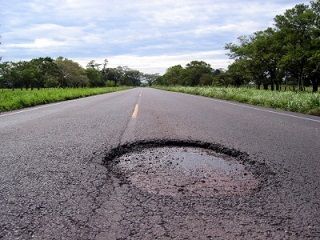America's Aging Infrastructure

Discussions of the future of transportation bring to mind the current sad state of affairs that exist in the U.S.; there is an ongoing debate here with respect to our crumbling infrastructure: our highways, bridges, railroad tracks, airports, etc. Everyone agrees that funding these efforts is important, though there are numerous opinions as to exactly how this should be accomplished. Take for example the funding that goes to maintain our highways, most of which were built in the 1950s. The money that is normally available to maintain this vast network comes most from gasoline taxes (18.4 cents a gallon), but has recently dried up. There are several causes centering around people driving less and using mass transit more, as well as the deployment of far more fuel-efficient cars.
So how to address the shortfall? Almost all law-makers here have some ideas on the matter; the most obvious is simply raising the tax by 10 cents (to $0.284), which would raise another 1 billion dollars annually. Proponents say that the gas tax hasn’t risen in the last 20 years, and simply needs to keep pace with the rate of inflation. Opponents, however, point out that such a tax is regressive; it affects the poor disproportionately; affluent people will not particularly notice an additional 10 cents a gallon, where the working poor will find this quite burdensome. Our president’s plan is to tax corporate profits that formerly were hitting offshore, i.e., repatriated funds. Most of us would agree that it’s unfair that clever attorneys working for large corporations have found a way to help their clients avoid the taxation that would otherwise be incumbent upon them.
It’s an interesting battle being fought here in the States with respect to the power of the corporation, which at this point seems to be limitless. At the same time that the infrastructure question is being debated, we have the Trans Pacific Partnership which allows corporations to bypass the laws of the United States and, in particular, to work their way around environmental regulation. We also, of course, still have in place the result of the U.S. Supreme Court decision “Citizens United,” which allows corporation to spend as much as the want to influence our elections.
Being optimistic for a sustainable approach to energy on this planet requires optimism that we can somehow get a grip on the wanton expansion of corporate power. The former cannot happen without the latter.
